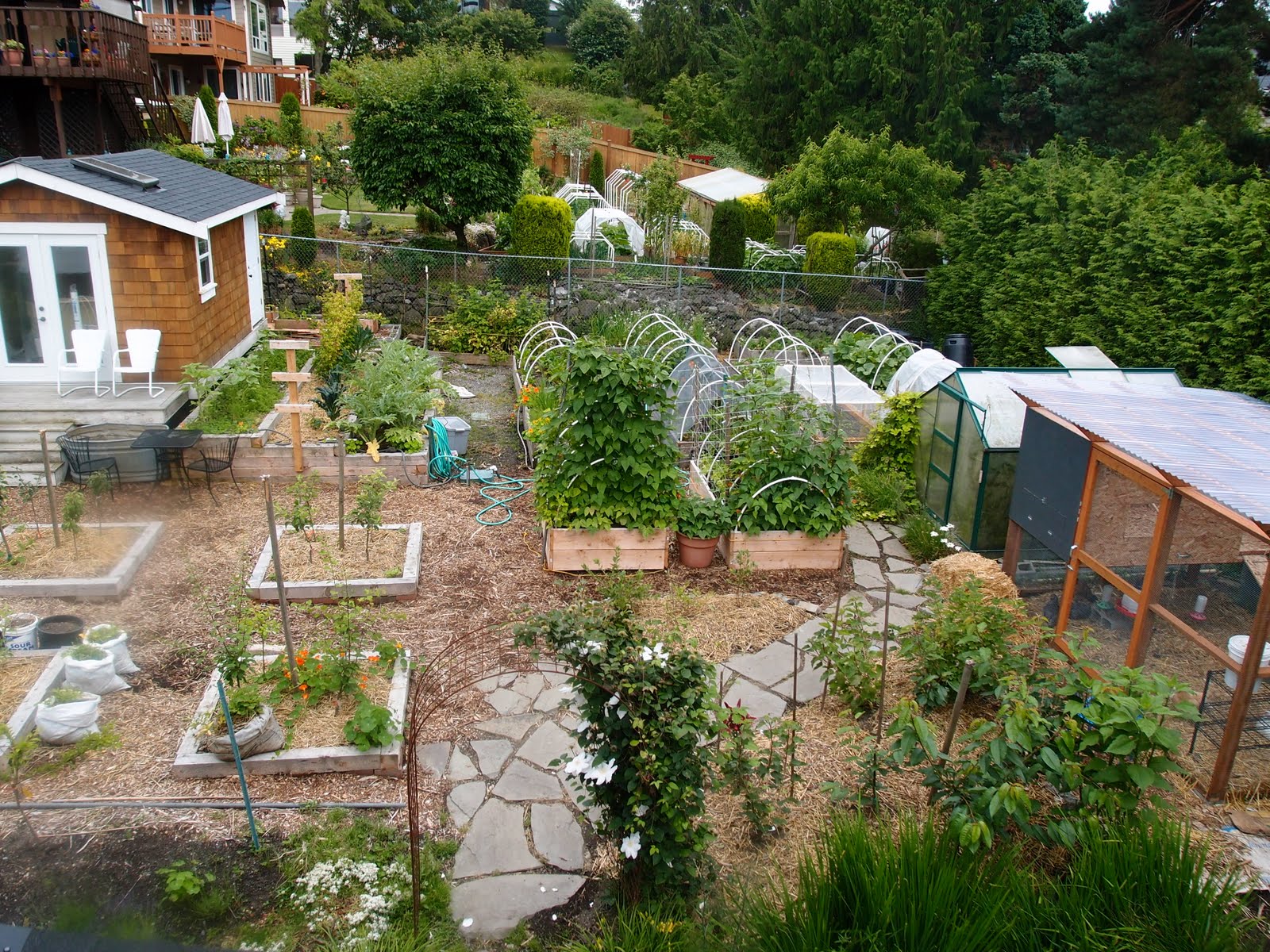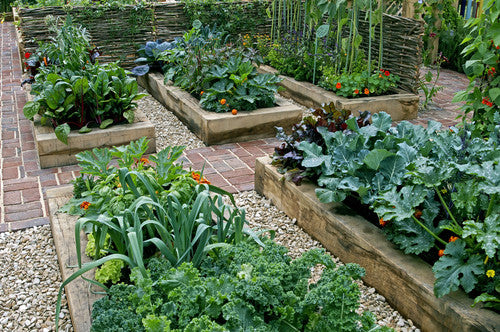Ways to Boost Productivity in Homestead Gardening
Ways to Boost Productivity in Homestead Gardening
Blog Article
Uncover the Keys to Producing a Productive and gorgeous Horticulture Space
Developing a productive and attractive gardening area is not merely an issue of planting flowers and vegetables; it requires a calculated method that includes different vital aspects. From selecting the right place based on sunlight and soil kind to attentively creating your format and selecting suitable plants, each choice plays a crucial role in the success of your yard.
Selecting the Right Location
Selecting the optimal area for your yard is essential to its success and overall visual allure. The initial step in this procedure entails evaluating sunlight exposure, as most plants require at least six hours of direct sunshine daily (Homestead Gardening). A south-facing yard typically receives the most light, while shaded areas can impede growth and blooming
Additionally, think about dirt quality and drain. Well-draining dirt is vital to prevent waterlogged roots, which can bring about plant diseases. Performing a dirt examination can offer useful info pertaining to pH degrees and vitamins and mineral content, enabling you to modify the soil accordingly.
Furthermore, proximity to water sources is another variable to evaluate - Homestead Gardening. Having simple accessibility to a hose or watering system can simplify the watering procedure and encourage constant plant care. Wind protection is likewise crucial; positioning your garden near frameworks, such as walls or fences, can secure it from extreme winds that may harm delicate plants
Last but not least, take into consideration availability for upkeep and harvesting. A well-placed garden enables hassle-free gain access to, making sure that you can quickly have a tendency to your plants without creating excessive stress or disruption. Thoughtful area selection lays the structure for a growing garden.
Picking Plants Intelligently
When choosing plants for your garden, it's necessary to think about variables such as climate, dirt problems, and personal choices to guarantee a effective and unified space. A detailed understanding of your regional environment will certainly assist you in picking plants that grow in your details setting. For example, picking drought-resistant varieties is helpful in arid areas, while moisture-loving varieties may be better for areas with high rainfall.
Dirt conditions are similarly vital; conducting a soil examination can expose pH degrees and nutrient web content, allowing you to pick plants that will certainly grow. Native plants are typically an outstanding option, as they are usually well-adapted to local dirt kinds and require much less maintenance.
Furthermore, consider your horticulture goals. Are you going for a decorative screen, a vegetable yard, or maybe a mix of both? This will affect your choices substantially. Lastly, assess your personal choices-- selecting plants that reverberate with your visual preferences will certainly improve your enjoyment and commitment to keeping your garden. By thoroughly reviewing these aspects, you can create a varied and flourishing plant option that boosts your gardening experience.
Designing Your Yard Design
With an attentively selected plant selection in hand, the next step is to create a garden design that makes best use of both elegance and performance. Begin by analyzing the readily available area, thinking about factors such as wind, sunlight, and color patterns. A tactical format ought to integrate different zones, consisting of locations for planting, paths, and possibly seating.
Start with bigger plants or focal points, such as trees or tall perennials, put purposefully to develop visual rate of interest. Layer smaller sized plants ahead to improve deepness and look at this website structure. Think about the development behaviors of your picked plants; taller selections must be placed at the back or center of beds, while much shorter ones can line the sides.
Incorporating paths not just assists in gain access to for maintenance however likewise welcomes expedition. Use products that enhance the garden's general aesthetic, whether gravel, stone, or wood chips.
In addition, consider seasonal changes and just how your design will look throughout the year. Incorporating evergreens alongside seasonal flowers can ensure year-round appeal. Ultimately, a well-designed yard design harmonizes the all-natural elegance of plants with sensible factors to consider, causing an area that is both inviting and productive.
Enhancing Dirt Wellness

To enhance soil health and wellness, begin by performing a dirt examination to examine pH degrees, nutrition material, and soil texture. Integrate natural matter such as garden compost, well-rotted manure, or fallen leave mold and mildew to improve soil structure, water retention, official statement and microbial activity.
Mulching is one more effective strategy; it not only preserves wetness but also reduces weeds and gradually enriches the dirt as it breaks down. Preventing too much tillage is critical, as it can interfere with soil structure and injury advantageous organisms. Instead, embrace no-till or very little husbandry techniques to keep dirt integrity.

Maintaining Your Garden Efficiently
A properly maintained garden gives satisfaction and performance, requiring constant attention to make certain that plants thrive and the landscape remains inviting. Efficient yard maintenance includes a number of key methods that improve the wellness of your plants and the general aesthetic of your area.
Normal watering is essential; however, it is necessary to customize your watering schedule based on the certain demands of your plants and neighborhood climate problems. Mulching can aid preserve dampness, suppress weeds, and regulate dirt temperature. Prompt weeding stops competition for nutrients and sources, ensuring that your plants flourish.
Trimming is an additional vital job. It urges healthy growth, removes diseased or dead branches, and forms plants to maintain an enticing framework. In addition, monitoring for diseases and useful link bugs is crucial; early detection and intervention can conserve your plants from considerable damages.
Fertilizing must be implemented attentively, using organic alternatives whenever possible to promote long-term dirt health and wellness. Ultimately, seasonal jobs such as planting, splitting perennials, and getting ready for wintertime will certainly guarantee your yard remains lively year-round. By following these techniques carefully, you can grow a yard that is both attractive and effective.
Final Thought
Picking a suitable location with appropriate sunshine, picking ideal plants, making an aesthetically pleasing design, improving dirt health and wellness, and making sure routine maintenance are important parts. By integrating these practices, one can cultivate a growing garden that not just enhances the landscape but likewise advertises eco-friendly equilibrium and sustainability.
From selecting the right place based on sunlight and dirt kind to attentively creating your design and selecting appropriate plants, each choice plays a pivotal duty in the success of your garden. Well-draining soil is necessary to protect against waterlogged roots, which can lead to plant diseases.When selecting plants for your yard, it's essential to take into consideration variables such as environment, dirt conditions, and individual choices to ensure a unified and efficient area. Ultimately, a properly designed yard layout harmonizes the natural beauty of plants with sensible factors to consider, resulting in an area that is both inviting and productive.

Report this page